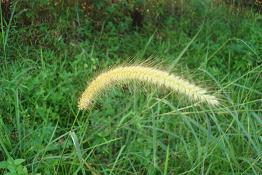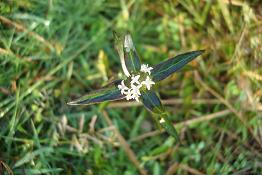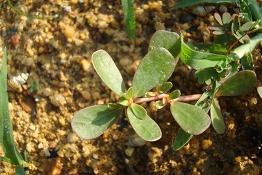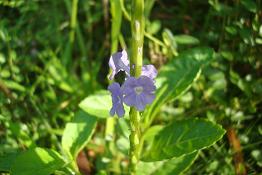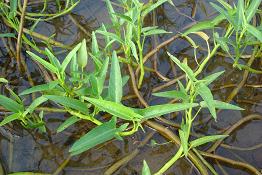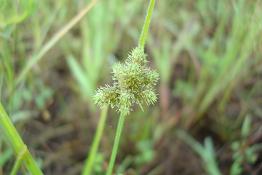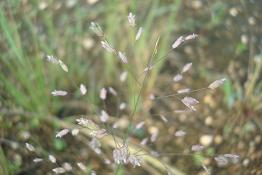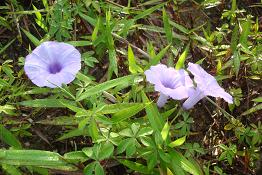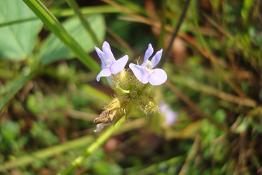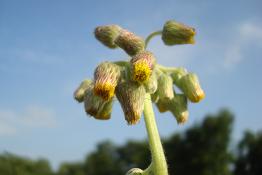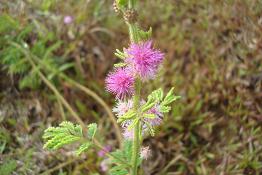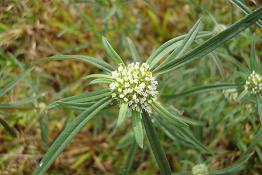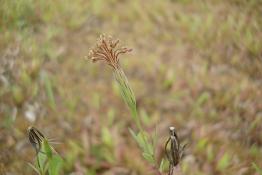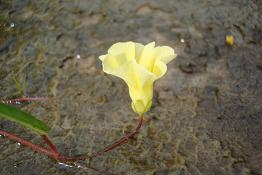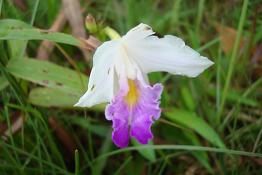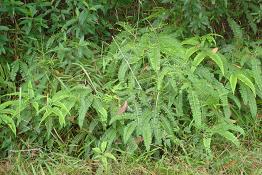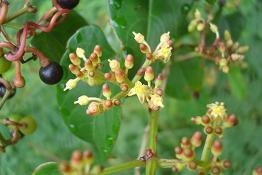Highlight:
It had been quite a while since I last visited a wasteland, or maybe it should be called deserted land since such land is not really a waste. Being in a tropical region, if a piece of open land was left alone for some time, it will be thriving with life forms, both plants and small animals in a relatively short time. This particular place had been frequented by me in the past. As I had moved to another town, I had not come by the area for more than a year. Fortunately, the land was still uninhabited. Vacant land is always a precious commodity in land scarce Singapore.
It was great to be back in a bright Sunday morning. Butterflies, bees, dragonflies and other small creatures were abundant. From left to right: Peacock Pansy (Junonia almana javana), Common Grass Yellow (Eurema hecabe contubernalis), and two dragonflies.
s.jpg)
s.jpg)
s.jpg)
s.jpg)
s.jpg)
s.jpg) One of the dragonflies had caught a
white leafhopper and was seen chewing off its wings. The land was rather soggy at some locations. Besides dragonflies, damselflies were also seen cruising around though not easily noticed due to
their smaller size compared to the dragonflies.
One of the dragonflies had caught a
white leafhopper and was seen chewing off its wings. The land was rather soggy at some locations. Besides dragonflies, damselflies were also seen cruising around though not easily noticed due to
their smaller size compared to the dragonflies.
s.jpg) More than a dozen of these spiky oval-shaped creatures
were found chewing up the leaves of the Morning Glory vine (Ipomoea cairica).
They should be the nymph of the
Golden Tortoise Beetle (Aspidomorpha miliaris).
More than a dozen of these spiky oval-shaped creatures
were found chewing up the leaves of the Morning Glory vine (Ipomoea cairica).
They should be the nymph of the
Golden Tortoise Beetle (Aspidomorpha miliaris).
Apple snails can be seen in the water soaked area. I was hoping to see the native version (Pila scutata) but it turned out not to be so when I saw the pinkish eggs. The mass of orange eggs had a wet looked which may mean that they were laid recently. As time passed the eggs should have a more pinkish appearance. These eggs belonged to the Golden Apple Snail (Pomacea canaliculata), an imported species. A brief introduction of the 2 types of snails can be found in the book "Private Lives, An Expose of Singapore's Freshwaters", page 98-99. Many empty snail shells were seen.
s.jpg)
s.jpg)
s.jpg)
s.jpg)
s.jpg)
On the plant side, I had added 2 new plants to my website, Monarch Redstem (Ammannia baccifera) and Spikerush (Eleocharis geniculata), from this trip. There were at least two unknown plants but after searching for the last 2 days, there was still no lead. It may take a while and maybe some luck to find their names. [Update: Clitoria laurifolia and Canarium vulgare]
s.jpg)
s.jpg)
One-leaf Clover (Alysicarpus vaginalis) was a common ground cover around the area. However, the colour of the flowers was now light
purplish pink instead of the reddish purple that I saw more than a year back.
A False Ox Tongue (Blumea lacera) plant had a freshly bored hole on its stem. However, I did not see the creature that did the work. This plant looks very much like Redflower Ragleaf (Crassocephalum crepidioides).
There were the usual wild plants which I had listed in the Photo Gallery below. The 2 hours was relatively short time to fully explore the area. I probably have to come by again soon.
Photo Gallery:
Below are selected photos from this trip arranged according to the sequence that they were taken. There is a text link under the photo that will direct you to more photos of the same species if they are available in my website.
Statistics:
